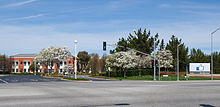The Muslim World
Tuesday, 27 December 2016
BEST-ISLAMIC-VIDEOS
من هو اول شخص ياتى به يوم الحساب؟ للشيخ عمر عبد... by BEST-ISLAMIC-VIDEOS ---------------------------------------------------------------------------------
Beautiful Quran Recitation by Maher Al-Muaiqly... by BEST-ISLAMIC-VIDEOS -------------------------------------------------------------------------------------
محمد صديق المنشاوي أروع تلاوة على الإطلاق by BEST-ISLAMIC-VIDEOS --------------------------------------------------------------------------------------------
محمد صديق المنشاوي أروع تلاوة على الإطلاق by BEST-ISLAMIC-VIDEOS -----------------------------------------------------------------------------------------------------------------------------------------------------------------------------------------
تلاوات نادرة _ سورة يس للشيخ_ محمد الليثي by BEST-ISLAMIC-VIDEOS ---------------------------------------------------------------------------------------
سورة الكهف بصوت سعد الغامدي The Holy Quran... by BEST-ISLAMIC-VIDEOS --------------------------------------------------------------------------------------------
أذان الفجر بصوت العفاسي - صوت رائع جدا by BEST-ISLAMIC-VIDEOS
Monday, 12 December 2016
Saturday, 10 December 2016
Many Ways to Make Money Blogging
Make Money Blogging

My Story Of Making Money Blogging
How to make money Blogging?
- Set up your blog
- Start creating useful content
- Get off your blog and start finding readers
- Build engagement with the readers that come
- Start making money from the readership you have through one or more of a variety of income streams
1. Start a Blog
2. Start Creating Useful Content
- How to Craft a Blog Post – 10 Crucial Points to Pause
- How to Create Blog Posts that People Remember
- The 4 Pillars of Writing Exceptional Blogs
- How to Come Up With Fresh Ideas to Write About On Your Blog
- 11 Quick Tips for Writing Compelling Blog Posts
- How Often Should You Blog? (Hint: The Answer Might Surprise You)
- 21 Ways to Write Posts that Are Guaranteed to Grow Your Blog
- 10 Ways to Switch Your Brain to Writing Mode When Working From Home
3. Get off your blog and start finding readers
- Are they reading certain blogs? List the top 3
- Are they participating in certain forums? List the top 3
- Are they listening to podcasts? List the top 3
- Are they engaging on certain social networks? List the top 3
- Which accounts are they following on each of these social networks? List the top 3
- 5 Mistakes Bloggers Make with SEO and What To Do About Them
- Here’s How My 2 Blogs Grew
- How to Socialize Your Posts for Maximum Effect
- How to Promote Yourself Without Coming Across as a Jerk
- 11 Ways I Diversified Traffic Sources for My Blogs to Become Less Reliant Upon Google [With a Surprising Twist]
- Grow Traffic to Your Blog Through Guest Posting and Creating Content for Other Blogs, Forums, Media and Events
- 2 Types of Content that Help You to Find Readers for Your Blog
4. Build engagement with the readers that come
5. Start making money from the readership you have through one or more of a variety of income streams
There are Many Ways to Make Money Blogging
1. Advertising Income
2. Affiliate Income
- The Ultimate Guide to Making Money with the Amazon Affiliate Program
- 10 Popular Affiliate Programs for Small and Medium Sized Blogs
3. Events
4. Recurring Income
6. Promoting a Business
7. Services
8. Products
Other Income Streams
Multiple Income Streams
Direct or Indirect Income?
Let’s Share the Journey to Make Money from Your Blog
Wednesday, 7 December 2016
Why You’re Not Seeing Your #Facebook Year In Review 2016 Video: How To Get It

How to get your Facebook Year in Review 2016 video

Why you are not seeing your Facebook Year in Review
A simple solution
Facemash[edit]
Facebook[edit]
Financials[edit]
Initial funding[edit]
First angel investment[edit]
Accel investment (Series A)[edit]
Greylock investment (Series B)[edit]
Sales negotiations[edit]
Microsoft investment (Series C)[edit]
Switch to profitability[edit]
Acquisitions[edit]
Design[edit]
IPO[edit]
Notes[edit]
- Jump up^ An "active user" is defined by Facebook as a user who has visited the website in the last 30 days.
- Jump up^ "Monthly growth" is the average percentage growth rate at which the total number of active users grows each month over the specified period.
- Jump up^ This value is from an investment document. The date is from when the document was revealed to the public, not the actual date that the website reached this many users.
References[edit]
Subscribe to:
Comments (Atom)






